Sandra has recently renovated her front sun-drenched garden, which has been sadly derelict
since the builders bulldozed.
Last winter she planted a patchwork of bare-rooted old
garden roses and tubestock perennials. Linda calls it her jewel garden – brimming with
amethyst, ruby, diamond, turquoise, amber and sapphires. She explains why these are her
favourites.
With a charm and a dignity that has escaped many modern roses, an 'old garden' rose refers to any rose bred before 1900. Think thatched English cottages swamped by roses or timber lychgate covered in waves of rosy blooms. 'Old garden' roses transport to a different time, to horse drawn carriages and cream teas.
These lovely old timers have a relaxed way of growing, with graceful arching canes bursting with blooms along the entire length. And these flowers are full, multi-petalled and fragrant. Some of them grow as laid back shrubs. Some grow as climbers, best trained up tall pillars. Some make whimsical walls when grown flat against a fence. And some have excellent pedigree.
My favourite roses like to mingle into each other. Photo - Linda Ross
My Favourites
Souvenir de la Malmaison is an old French Bourbon rose, which dates back to 1843. She was named in memory of Empress Josephine's famous
garden at Château de Malmaison. Large flattened blooms featuring petals of the slightest shell pink are arranged in quarters, and exhale a divine fragrance.
Perfect for a garden arch where you can enter through and enjoy the blooms at eye level.
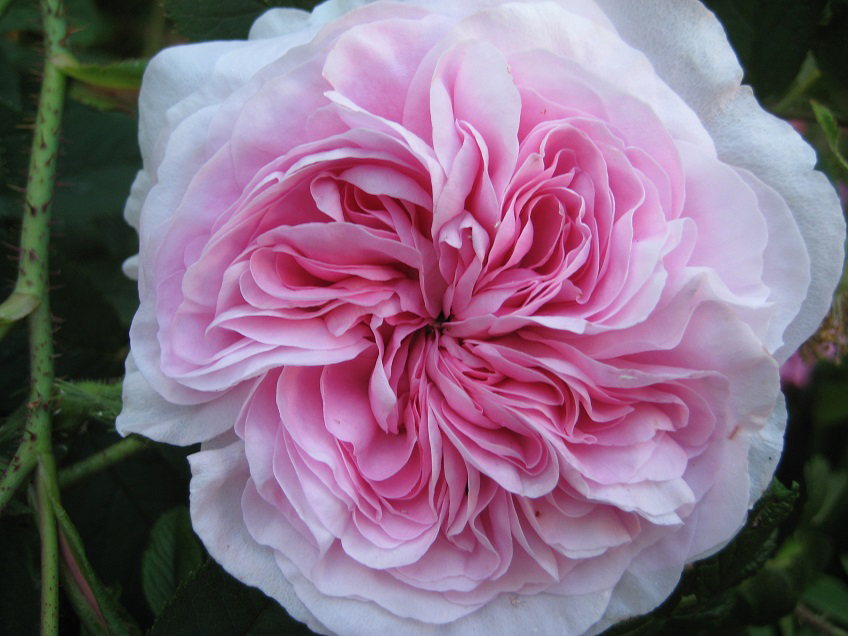
Souvenir de la Malmaison. Photo - Robin Powell
She is named for the wife of a famous French banker, Madam Isaac Periere is another Bourbon with large shaggy blooms in a deep mauve/burgundy/crimson,
and so intensely fragrant it defies belief. It grows as large and loose arching canes - sometimes measuring 3m long! I peg each cane to the ground
(a little like the harbour bridge shape) with coat hanger wire or tent peg to secure. This encourages many more flower along the length of the canes
(see photo below).
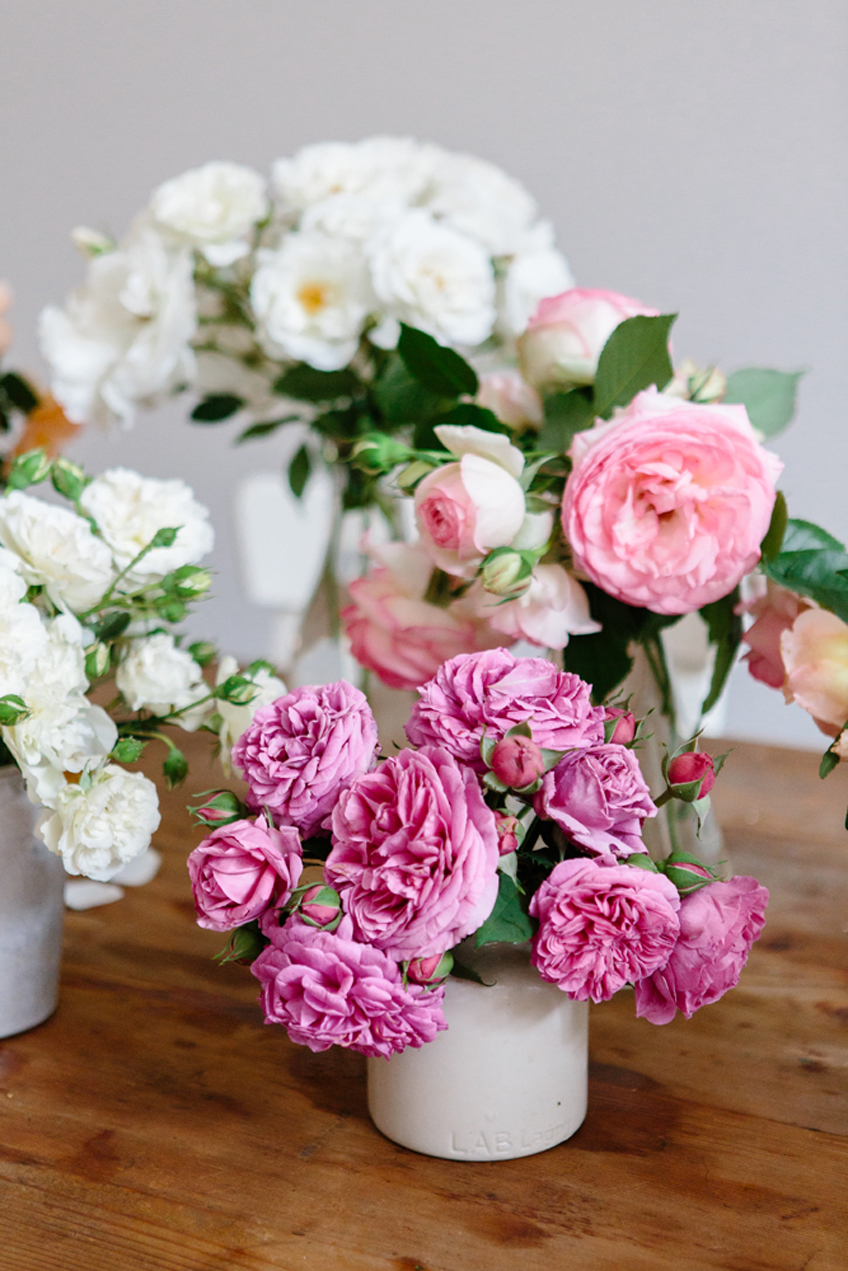
Pick lots and often. 'Madame Isaac Periere' in the foreground. Photo - Luisa Brimble
Sombrieul is a lovely old Tea rose which was introduced in France in 1850. The blooms are large with quilled tissue-like petals, fragrant
and fragile, warm white with an 'eye' at the centre. One of the finest climbers in the rose world although I grow it as a large lax shrub and peg down
her long canes. Handle with care ... she is thorny.
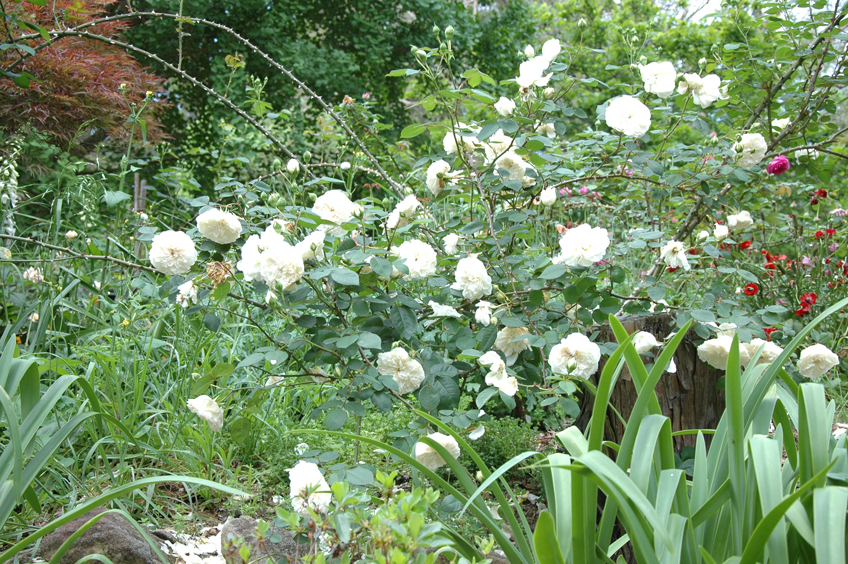
Sombrieul in Sandra's garden. Photo - Linda Ross
Crepescule is a classic Noisette rose, bred and introduced in France in 1904. Butterscotch buds open apricot-yellow in their hundreds.
It's hard to beat for the quantity of blooms and it's almost continuous flowering. Vigorous and healthy with no thorns, good resistance to disease,
and sweet musk fragrance; this rose ticks all the boxes. Grow it as a large shrub or train it on wires along a fence. Crepescule is French for twilight,
fitting for a rose the colour of sunset.
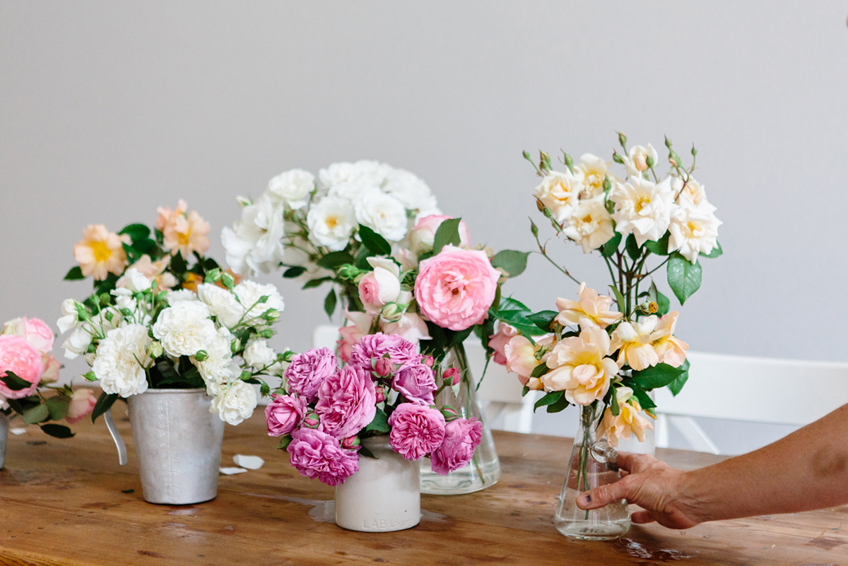
Linda places Crepescule on the dining table. Photo - Luisa Brimble
Pierre de Ronsard is not old! She was bred by Meilland, one of their 'Romantica' roses from 1987 with a form that closely resembles an
old fashioned cabbage rose. Creamy white buds edged with pink open up into huge cupped and heavy blooms - creamy white and suffused with pink and carmine.
This beauty is spectacular in full flower! Like most modern roses it repeats through the seasons, early then late spring, early summer and again in
autumn. Heavy winter pruning encourages good flowering. I have it growing up pillars and trained along wires. You can train it along a fence or wall.
Best of all she’s very disease resistant.
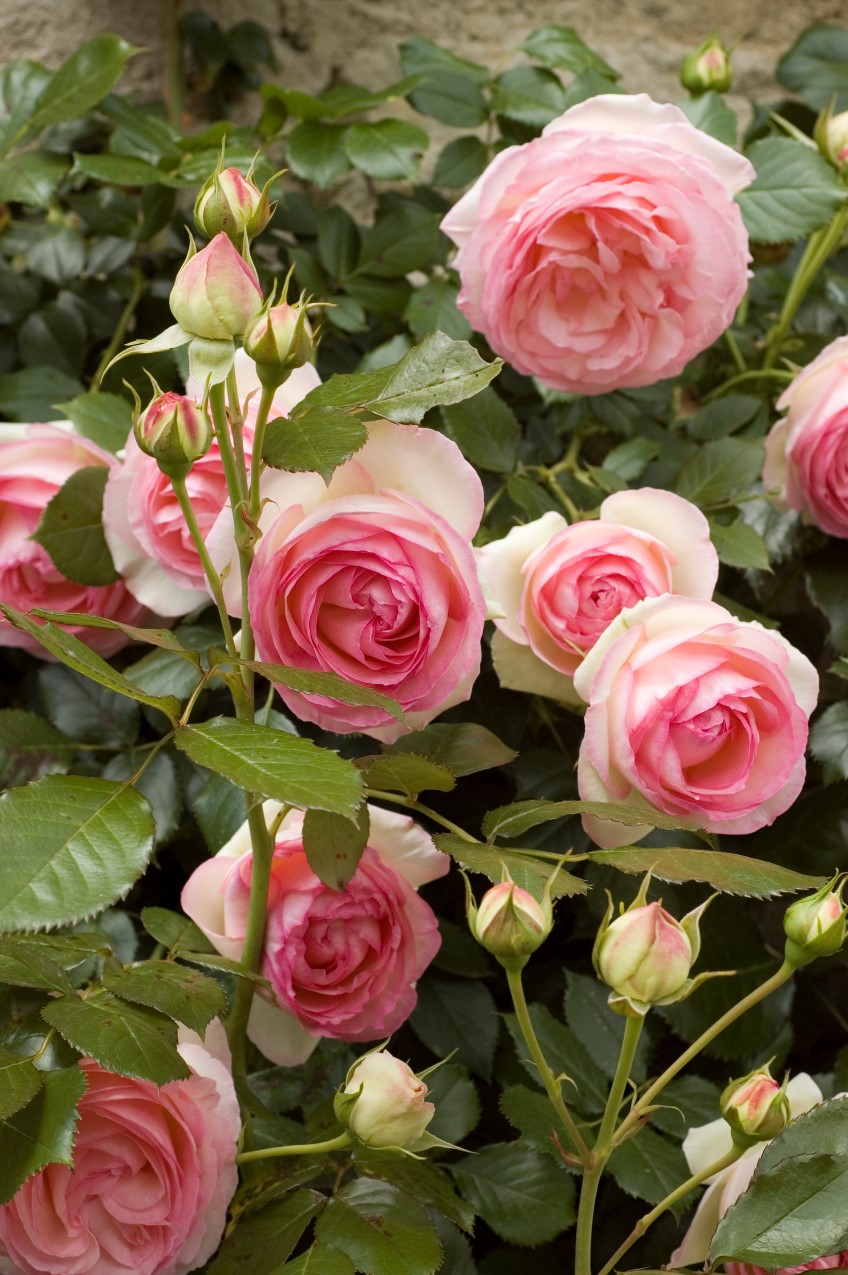
Pin Climbing 'Pierre de Ronsard' on sunny walls and fences. Photo - Linda Ross
Surrounded by my roses, drinking in their delicious scents, life is beautiful. Roses have an charming longevity that makes them my first choice for spring
colour, fragrance and old fashioned elegance. My living time travellers. Plant them bare rooted in winter or in spring potted in full colour and continue
their jewel tones by planting similar or contrasting perennials nearby.